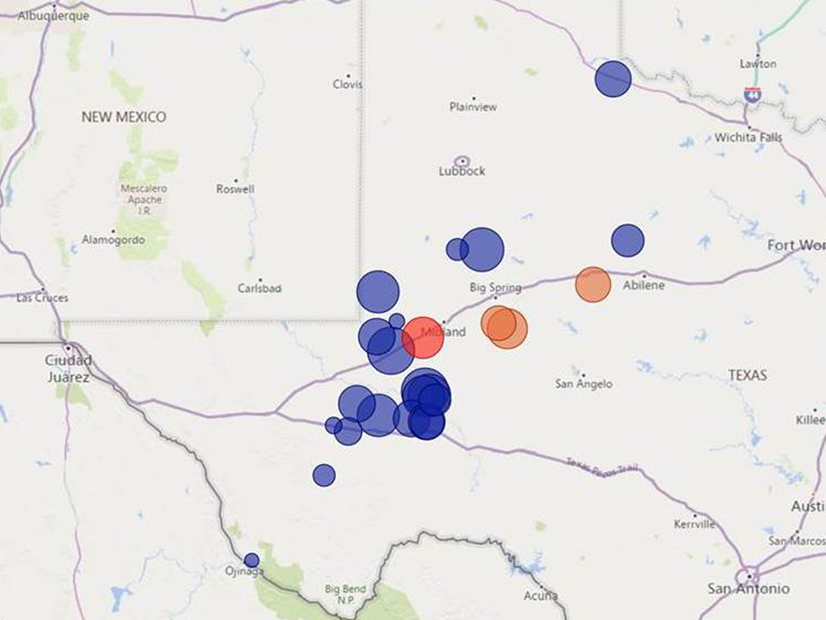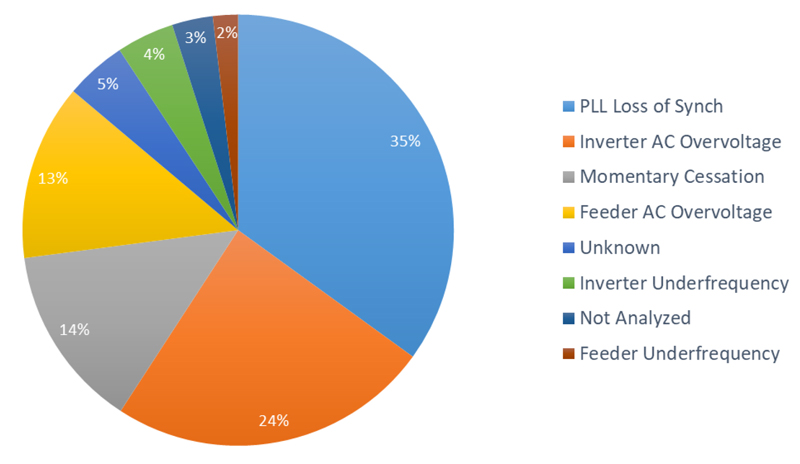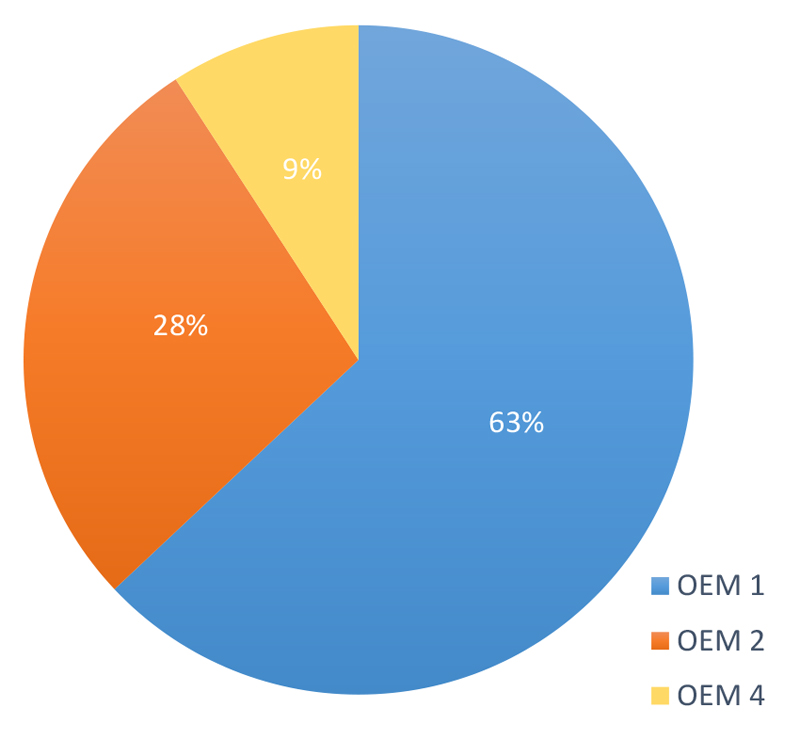
Recent issues with solar photovoltaic (PV) resources in Texas should serve as a warning sign that the power industry is not moving fast enough to implement the recommendations in NERC’s reliability guidelines, according to a new report released by NERC on Wednesday.
However, NERC’s report also identified shortcomings by NERC and FERC that should be addressed to prevent future issues.

The event began at a combined-cycle power plant near Odessa on the morning of May 9. Prior to the disturbance solar PV and wind facilities accounted for about 9% and 34% of ERCOT’s total internal net demand of 47,434 MW, with the rest covered by synchronous generation.
Issues Began at Combined-cycle Plant
Around 11:21 a.m., an A-phase-to-ground fault occurred on a generator step-up (GSU) transformer at the plant, caused by a failure in a surge arrester at the combustion turbine (CT), which was undergoing start-up for testing at the time. Protective relaying on the GSU cleared its fault within three cycles, and subsequently the faulted CT was tripped offline as well. Because of the GSU fault, as well as a steam turbine power reduction at a different unit at the same facility, the plant lost 192 MW of generation.
The fault and generation loss caused voltages in the area to be depressed on the 345-, 138- and 69-kV networks during the on-fault conditions. This “perturbation in system voltages and phase angles” in turn caused more than 15 solar PV and four wind facilities in the area to suffer reduced voltage as well; a map in the report shows that solar facilities reported “abnormally responding to the event” as far as 200 miles away from the combined-cycle plant.
NERC’s analysis mainly focused on the solar plants, including those with battery energy storage (BES) facilities and only covering the generators that experienced a reduction of more than 10 MW. The report identified seven causes of power reduction at the facilities:
- Phase lock loop loss of synchronism (389 MW) — seen at two large BES facilities and attributed to the manufacturer of the inverters at the plants. NERC said it has seen this cause of tripping in previous similar events and considers it “a systemic concern” for facilities with the same equipment.
- Inverter-level instantaneous AC overvoltage (269 MW) — because oscillography data is only collected at the point of interconnection, NERC was unable to discern the extent of this type of tripping. NERC said it has identified this condition in “nearly all large-scale solar PV tripping events” that it has analyzed.
- Momentary cessation with plant-level ramp rate interactions (153 MW) — seen in one plant with legacy inverters that use momentary cessation when the voltage falls below 0.9 pu. In this case, rather than allowing the inverters to recover to predisturbance output quickly when voltage recovered, the plant-level controllers interfered to slow the recovery because of balancing authority ramping requirements. NERC identified this as an inappropriate application of BA limits.
- Feeder-level instantaneous AC overvoltage (147 MW) — one facility had set its targets for feeder-level protection trip on instantaneous phase AC overvoltage to 1.2 pu. The plant’s inverters responded to the fault by reducing active current to zero, injecting reactive current, and then injecting active and reactive current after fault clearing. This increase in reactive power drove feeder voltages above the target and caused them to trip.
- Inverter-level underfrequency (48 MW) — likely caused in error after a “poorly measured or calculated frequency signal,” as frequency never fell outside the boundaries established by reliability standard PRC-024-3 (Frequency and voltage protection settings for generating resources).
- Feeder underfrequency (21 MW) — a feeder-level relay at one plant operated on underfrequency, tripping 21 MW of inverters. Subsequent analysis found the relay was set to trip immediately after underfrequency detection, rather than the 5-cycle delay recommended by the manufacturer.
Another 51 MW of reduction was attributed to unknown causes because of lack of sufficient data at the facility for useful analysis. Additionally, 34 MW of reduced output at various solar facilities fell below the threshold for detailed review.
Recommendations for Multiple Stakeholders
The review team concluded the report with several recommendations for registered entities, FERC, NERC and ERCOT.

The report’s advice for FERC includes revising the commission’s Generator Interconnection Process and Generator Interconnection Agreement to add “comprehensive requirements that [are] clear, consistent and ensure reliable operation of [inverter-based] resources.”
The largest share of recommendations is for NERC itself: first, the authors urge the organization to make “significant enhancements to the NERC reliability standards” to address the performance gaps revealed by the events in May.
Examples of needed changes are a “performance validation standard” that would clearly require transmission operators, reliability coordinators, and balancing authorities to report performance abnormalities to NERC and their regional entity and correct them in a timely manner. Also recommended is a standard “focusing specifically on generator ride-through performance” to replace PRC-024-3, which has “caused significant confusion for inverter-based resource controls and protection within the individual inverters.”
In addition, NERC is urged to update its standards to “address modeling and studies gaps for inverter-based resources”: for instance, through requiring that accurate EMT models be created at the time of interconnection, and to establish a “feedback loop to ensure model accuracy,” conducted regularly by transmission planners and PCs.
Finally, the report recommends that ERCOT conduct a detailed model quality review for all inverter-based resources connected to its system to identify “any control or protection function that can trip the facility.” NERC also suggests that ERCOT perform a gap analysis of its interconnection study process to find areas of improvement and a system-wide model validation effort, while ensuring that the recommendations in NERC’s reliability guidelines are adopted to prevent future issues.



